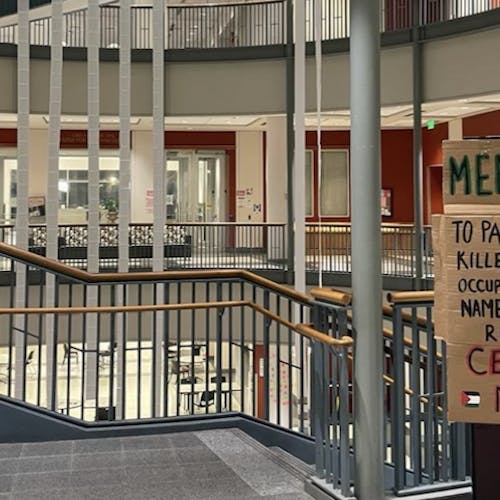Rutgers gears up for 250th anniversary with commemorative project

Rutgers University Art Library stands today in Voorhees Mall on the College Avenue campus, where the Delta Upsilon fraternity house stood at least six decades ago.
Decades of greek life relocation, building construction and historic Rutgers vs. Princeton rivalry is being compiled into “Rutgers: A 250th Anniversary Portrait.” The 250th anniversary of Rutgers is on Nov. 10, 2016.
The coffee table book will be a compilation of pictures and content culled primarily from the Scarlet Letter yearbooks, Rutgers’ official annual photographic and written record.
Elijah Reiss, communications and promotions assistant of Rutgers 250, said the project fit him because he had an interest in Rutgers history since arriving at Rutgers.
Reiss, a School of Arts and Sciences sophomore, visited the Special Collections and University Archives in Alexander Library as a first-year student and looked at photographs of University architecture and college traditions.
“A whole lot has changed, but a lot has stayed the same,” he said.
As a part of Rutgers 250, he spends his time in Davidson Hall on Busch campus, where he goes through the Scarlet Letter yearbooks page-by-page and marks the photographs and content he finds interesting on a computer document.
He learned that Voorhees Mall used to be called Bleecker Place, and that the layout was vastly different. Students currently know the area as a quiet, serene yard filled with dappled sunlight. But in the early years of the University, cars traversed through Voorhees Mall.
Down the street from Voorhees Mall, history is still abundant.
Although Reiss said he is not able to entirely confirm the fact, evidence suggests that Lou Gehrig, a Major League Baseball athlete, was discovered at a game against Rutgers on Neilson Field.
Neilson Field was the first football field at Rutgers, enduring until the early to mid-1940s, he said, and stretched from Records Hall to the parking deck near Records Hall on the College Avenue campus. Neilson Field was named after James Neilson, for whom Neilson Dining Hall is named.
Across the street from Records Hall, the first intercollegiate college sports game was played in place of where the College Avenue Gymnasium stands today.
The Ballantine Gymnasium originally sat on the corner of Somerset and George St., but it burned down in the 1930s.
Constructors began to tear down the Ballantine Gym, but kept some of the infrastructure intact, partly because the Ballantine Gym was “opulent,” but also because the construction was occurring in the zenith of the Great Depression, when the University was keen on reusing whatever could be saved.
The core of the Ballantine Gym was saved from the fire, and art classrooms were built around it.
The University then built what is now the Jane Voorhees Zimmerli Art Museum in 1966, and the museum that guests frequent now was built around the pre-existing art classrooms, and by association, the Ballantine core.
The original pool from the Ballantine Gymnasium also remains under the floor of the Zimmerli.
“When you’re in [the] Zimmerli, you don’t think you’re in a part of the building that’s 110 years old, or that there’s a pool under you,” Reiss said.
April Coage, assistant director of the Rutgers 250 Project, has been working with the publishing company Third Millennium Publishing to market and promote the book.
The student team helps her advertise the book and scour the reserves at Alexander Library on the College Avenue campus to collect both familiar and obscure history.
Coage said learning bits and pieces of Rutgers’ history has changed her perception of her school.
“I have a new perspective [of Rutgers.] I’m an [alumna] here,” she said. “Learning about all this gives me greater appreciation for my alma mater.”
Aishwarya Sharma, project manager of Rutgers 250, has been responsible for assisting in marketing and setting timelines to get the book one step closer to the finish line.
The book is available for pre-sale until March 1, 2015 for $50. All individuals that place orders during the pre-sale period will have the opportunity to have their names in the back of the book.
All orders placed after March 1 will cost $70.
Sharma, a Rutgers Business School junior, said the profit is not the end goal.
“[We’re] not doing it for the money. [We] just want … Rutgers to be depicted well,” she said.



